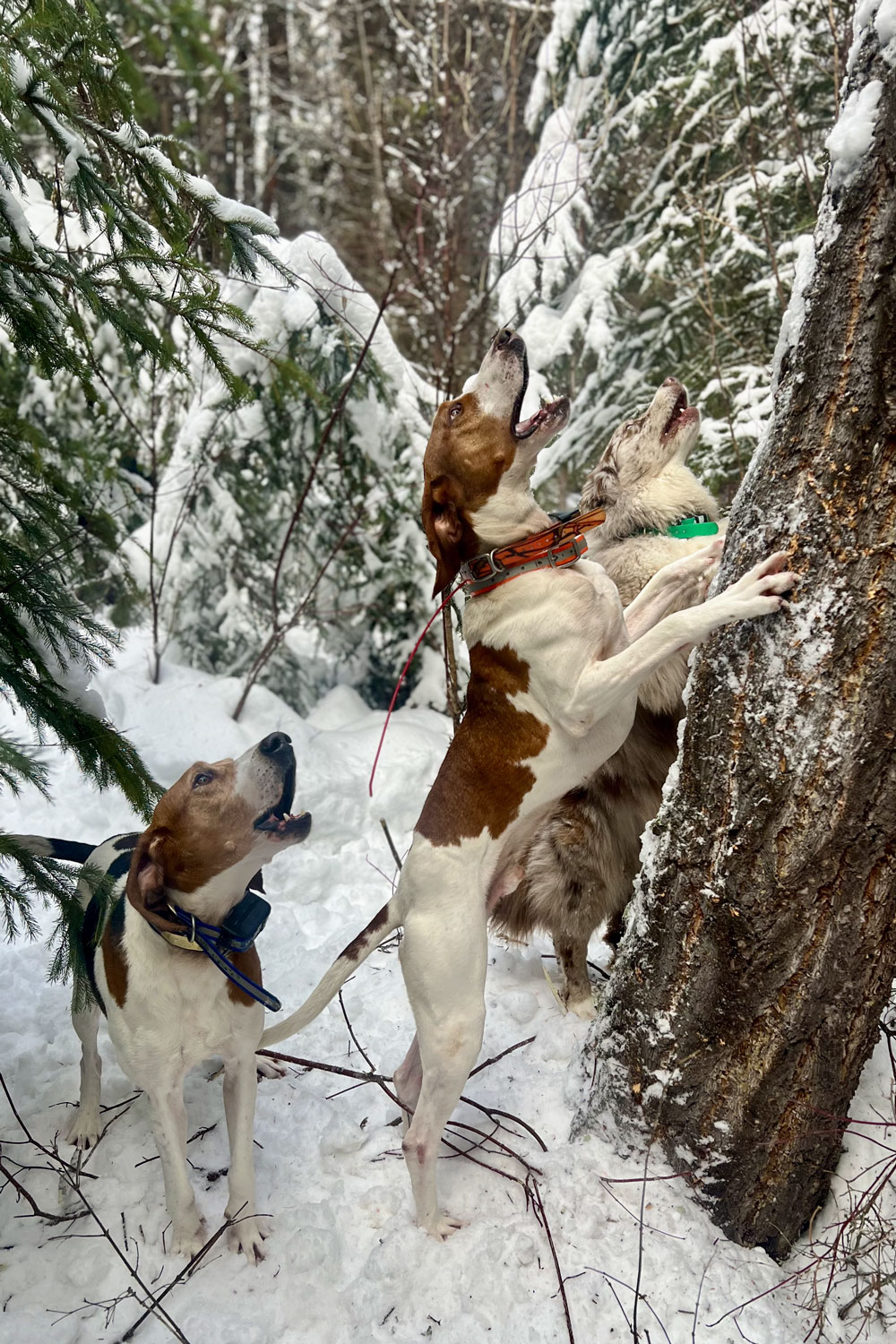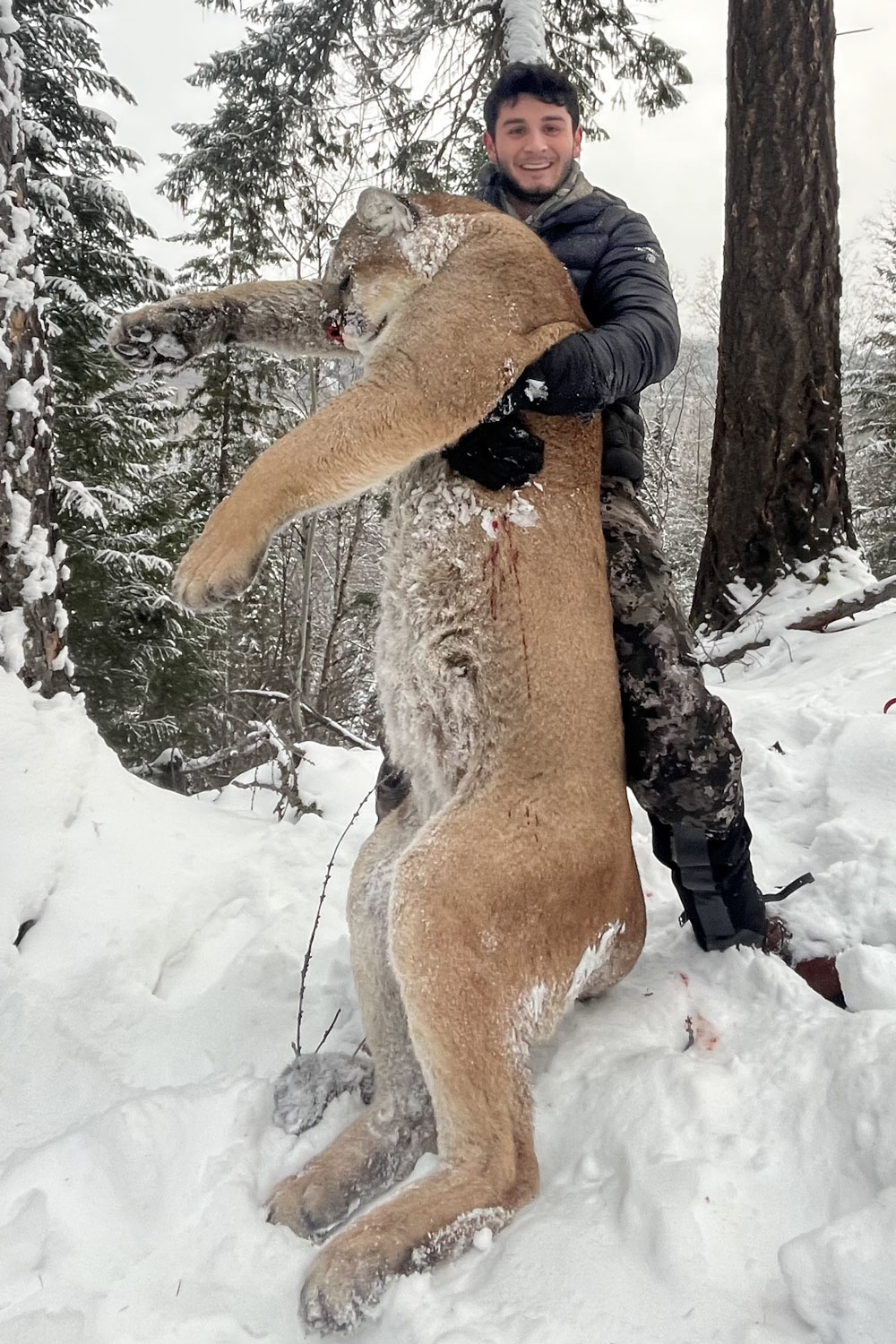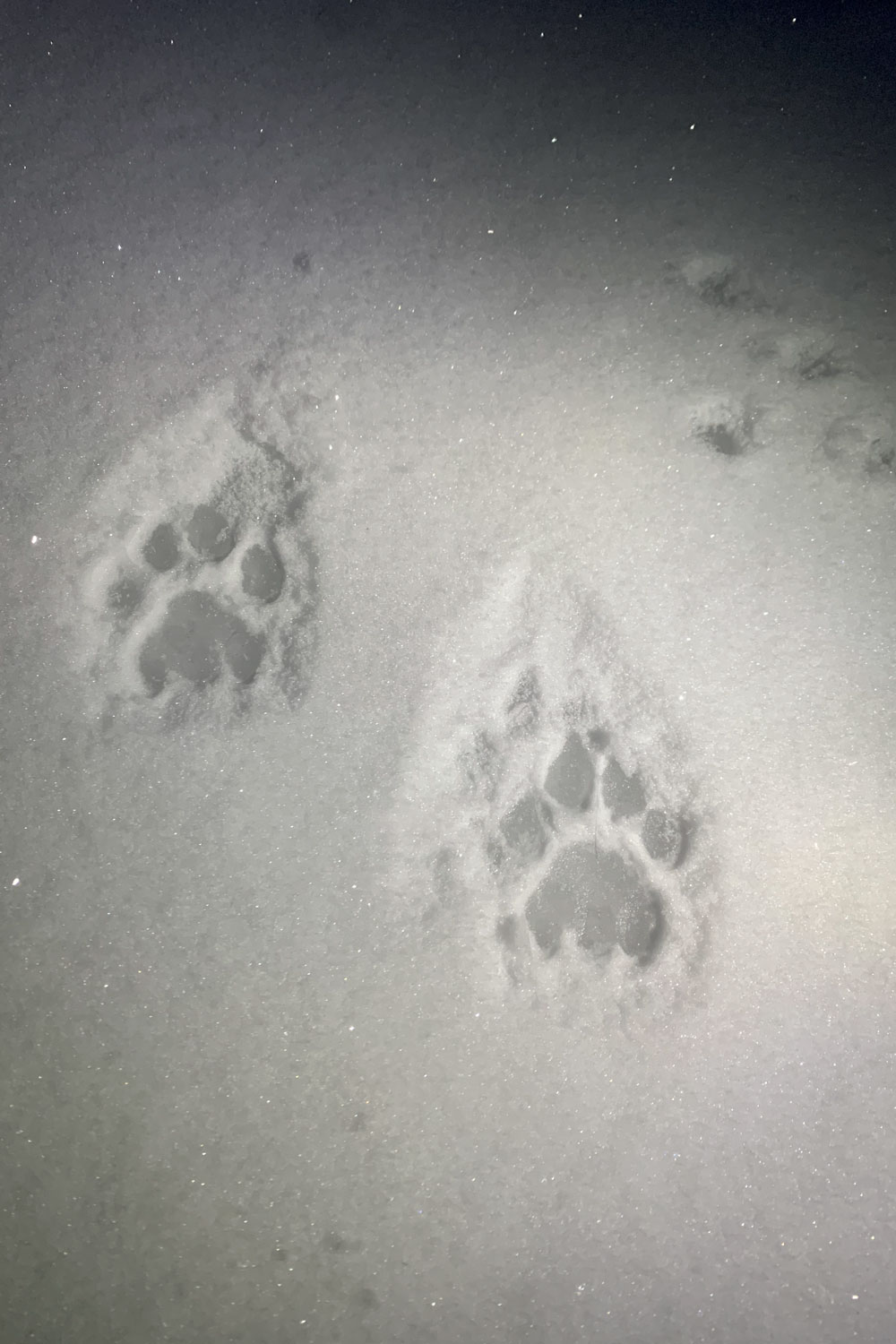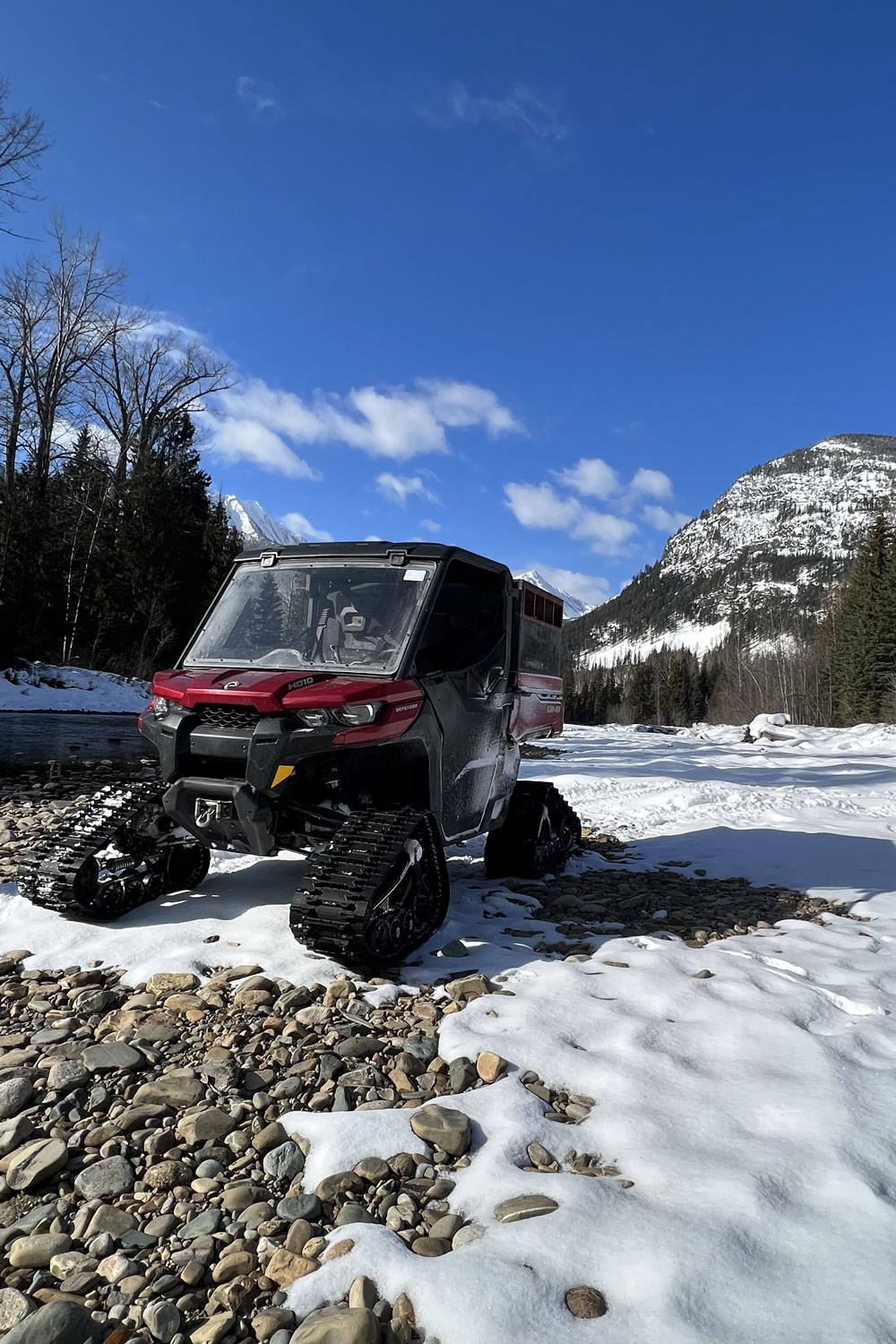So you’ve seen pictures of big mountain lions and heard stories about chasing hounds through canyons and snow-choked ridges. Maybe you think you’d like to try it. Or maybe you’ve never seriously considered it — possibly because you think hunting with dogs is somehow easy.
Let’s be clear: it’s not easy.
A guided cougar hunt with hounds is one of the most physically demanding, logistically complex, and emotionally charged hunts in North America. But it’s also one of the most rewarding — and this article will give you a full look at what it really involves.



The relationship between hound and hunter goes back over a thousand years. The first scent hounds arrived in North America as far back as the 1600s — dogs like foxhounds, beagles, and later, European hounds from Ireland, France, and Germany.
Today, most big game hound hunters rely on a mix of breeds like the Treeing Walker, Bluetick, Black & Tan, Redbone, and Plott hound. Crossbreeds are common, and a skilled houndsman values the different skill sets each dog brings to the pack — from cold-nose trailers to wide, fast runners that can push a cat hard.

A typical mountain lion hunt starts long before sunrise. You and your guide will travel miles of steep, icy roads — searching for a fresh track. Track age, direction, terrain, and animal behavior all factor into the decision to release hounds. An experienced guide can often tell gender and size just from the track.
Once you find the right trail, it’s time to collar the hounds and prepare for the chase.
“Tracks in the mountains go two ways: straight up or straight down.”
Expect creek crossings, cliffs, steep timber, and plenty of thigh-burning climbs. This is not a hunt for the underprepared.

Hounds are released. Their voices echo off the canyon walls, each bark telling the guide a different story. Most hunters can’t tell one howl from another, but a good houndsman knows exactly what’s happening based on sound alone.
Soon, the dogs are out of earshot — and all that remains is the silence of the backcountry and the cat’s trail in the snow. You follow the track, always moving, always listening. You might climb to a lookout or cross frozen terrain known only to the cats.
The most rewarding moments? When you leave the cat in the tree to grow up — walking away with a great story, fresh motivation for tomorrow, and some incredible photos.

When you finally reach the tree, adrenaline spikes. The hounds are baying below the cat — excited and looking for praise. There’s time to evaluate the animal, tie the dogs safely, and find an ethical shooting position.
If it’s a harvest, the work begins: skinning, packing out the meat and hide, and descending through the same rugged terrain that brought you here.



Your gear matters — a lot.
What I recommend:
- Base layers: Synthetic or merino that wicks and dries fast. You will sweat.
- Mid layers: Fleece or wool. Add or remove based on terrain and pace.
- Outerwear: Waterproof, breathable hard shell with solid durability.
- Boots: Winter-rated with soft soles for traction and stiff uppers for support.
- Poles: A good trekking pole makes a world of difference on slick sidehills.
- Pack: Your fall hunting daypack will likely do the trick.
- Down jacket: A lightweight emergency layer in case things go sideways.
- Food & hydration: Don’t skimp. High-exertion hunts burn calories and dehydrate fast — even in cold weather.
I also carry a freeze-dried meal and metal cup to melt snow in a worst-case scenario.

Shots on hound hunts are close and limited. Often, using your guide’s rifle is the best move — especially if you’re flying in. I personally like a lightweight .223 with a synthetic stock. A lever-action .30-30 has also earned its place.
Avoid big calibers unless you’re okay with pelt damage.

Not all hound hunts are created equal. Before booking:
- Ask how long your guide has run hounds and how many hunts they do a year.
- Make sure you’re the only client during that week.
- Ask what a full hunting day looks like.
- Clarify what happens in bad weather. Do they offer rescheduling options?
- Confirm it’s a toms only hunt — and that your guide can judge sex and size from tracks.
Any cougar looks huge in a tree. You want a guide who can tell the difference before the hounds ever leave the road.

If you’re ready to climb, freeze, sweat, and chase one of North America’s most elusive predators — guided by the voices of dogs that live for this — a cougar hunt with hounds might be the most unforgettable adventure of your life.
Just know this:
It’s hard. It’s wild. And it’s 100% earned.
— Ryan Berard
Owner & Head Guide, Sawtooth Outfitters
